ANIMAFEST SCANNER X
Symposium for Contemporary Animation Studies
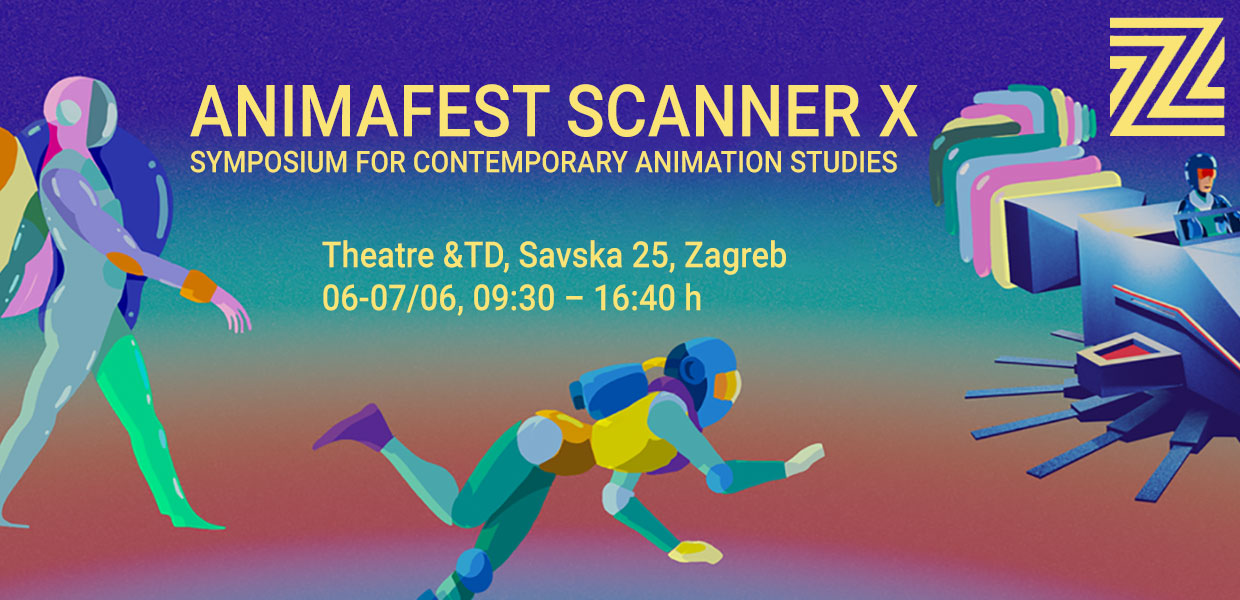
The 10th edition of the Symposium for Contemporary Animation Studies Animafest Scanner X aims again to create synergy of practice and theoretical discourses, and stimulate exchange between filmmakers and scholars. As the worldwide animation studies have been rapidly growing and evolving in recent years, catching up with the expanding field of animated films, Animafest Scanner symposium is again at the frontline of the discourse and the interaction of theoretical and practical approaches to animation.
The symposium is held in association with the World Festival of Animated Film – Animafest Zagreb. Over the course of its fifty-one-year history, the festival has given a stage to different animation forms and formats in competition and non-competition environments, presenting a worldwide selection of auteur, experimental and mainstream animated films in various programs.
The speakers will focus on the following subjects: What Does ‘Animation’ Mean Now?, Digital Technologies and Originality, Animation Assisting Other Art Forms, Sci-Fi in Animation.
In English, open to public.
06/06 TUESDAY
09:30 Welcome & Introduction
PANEL 1 – WHAT DOES ‘ANIMATION’ MEAN NOW?
Moderator: Nikica Gilić
PANEL 2 – DIGITAL TECHONOLOGIES AND ORIGINALITY
Moderator: Franziska Bruckner
07/06 WEDNESDAY
09:30 Introduction
PANEL 3 – ANIMATION ASSISTING OTHER ART FORMS
Moderator: Andrijana Ružić
PANEL 4 – SCI-FI IN ANIMATION
Moderator: Holger Lang
PRESENTERS
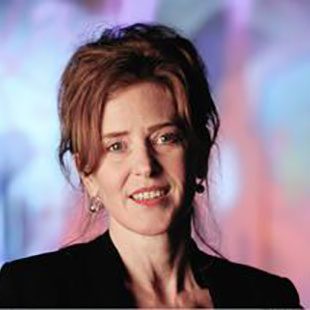
Suzanne Buchan
KEYNOTE: Animation Matters
This talk engages with some of the questions posed in the symposium topic 1 What Does ‘Animation’ Mean Now? and also raises others of a political, ethical or educational nature. This includes how animated works can address and solve problems and create benefits, taking into account current urgent realities and speculative future challenges facing the human and non-human world. This generates reflection on what motivates us to work in our field: what is our position, and why that matters now. The aims are to stimulate debate about how we articulate what we mean by ‘animation’ in our contemporary research, and why intention and agency in creative practices are important. The ambition is for us, singly and collectively, to find novel approaches for if and how we can meaningfully define animation for ourselves and, perhaps more importantly, for others.
Suzanne Buchan is Professor and head of MA Animation at the Royal College of Art London. Her research positions animation as central to contemporary debates in visual culture and the evolving relationships between media, creative industries and social change. She has published widely, most recently on animation and memory and on indigenous animation, is founder and editor of animation: an interdisciplinary journal and has been a guest speaker and professor at universities around the world. She is also active as a curator, including Animated Wonderworlds (Museum for Design Zurich), and was a founding member and, for close to a decade, co-director of the Fantoche International Animation Film Festival, Baden.
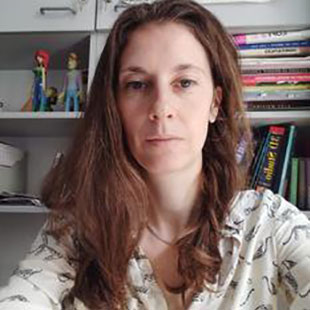
Mina Sablić Papajić (Serbia)
WHY DO WE NEED TO DEFINE (AUTEUR) ANIMATION AGAIN?
The history of definitions of animation is mainly based on the need to distinguish it from live-action cinematography. That need is still important for a different reason: From the beginning of cinema, animation was involved in film with special effects, but today animation is also a way to economize on the production process of film content and become a substitute for scenography or even actors. Therefore, by becoming a tool, animation is losing its status as a medium. That is why it is of great importance to define animation so we can distinguish it from everything else that animation can be in its expanded forms. If the animation industry is developing in the direction of building a hyperrealistic virtual reality, the auteur animation can be self-reflexive and question that (new) reality. In this paper I will try to define animation according to the question of how animation treats reality, starting from animation’s inherent characteristics. In the roughest division, at one end of the spectrum there is the animation that strives for realism and hyperrealism, whether in a classical (classicist) form, or experiments with new technologies, while at the other end of the spectrum there is animation that mostly attaches the phrase ‘auteur’ and in which film reality is self-reflexive, i.e. self-aware. The definition of auteur animation is partly based on the legacy of modernist animation and the phrase was coined in a certain historical context (characterized by specific technical-technological features, as well as aesthetics and social conditions) so it would be interesting if it opens questions: Has contemporary auteur animation retained the critical and self-reflexive component inherent to modernism? Is it possible to define what comes after modernistic auteur animation?
Mina Sablić Papajić is a screenwriter and dramaturge. She works as a teaching associate at the Animation department at the Faculty of Applied Arts. Mina is a member of program and selection team of European Animated Film Festival Balkanima. She is an associate screenwriter for two professional animation studios based in Belgrade, and a member of Association of Drama Artists of Serbia.
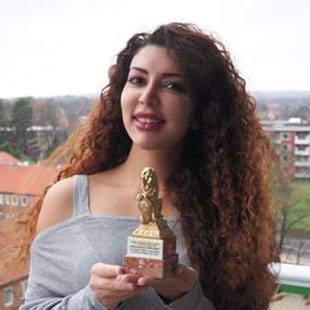
Marzaneh Omidvarnia (PhD, Roskilde, Denmark)
WHAT DOES ‘ANIMATION’ MEAN NOW?
A person’s definition of animation and the criteria used to define it may determine whether animatronics should be included in the animation category. Some may take a technical approach, defining animation as a medium that involves the creation of moving images frame by frame. They may argue that the technical process of animatronics differs significantly from traditional animation techniques, and this distinction is imperative to maintain. They may also claim that animatronics falls more into the live action, puppetry, robotics or special effects categories and that its inclusion in the animation category could blur the lines between different disciplines. Others may argue that animation is characterized purely by the illusion of movement, regardless of the technique used to achieve it. In many ways, animatronics is similar to animation. Both create the illusion of life, which is a key element of animation, through carefully orchestrated manipulation of physical objects or digital models. Both involve predetermined movements and simulated reality. Animation and animatronics share timing, spacing, and performance principles. Furthermore, animatronics could be considered an extension of stop-motion animation in which physical objects are manipulated to simulate reality. Another similarity between animatronics and animation is the creative possibilities they both offer. Animatronics allows for the creation of complex, physically-realistic characters and environments that are impossible to create using traditional animation techniques. Like any animation technique, animatronics requires a high level of skill and craftsmanship, with each puppet or object carefully designed and constructed to bring a vision to life. From the creation of intricate facial expressions to the construction of elaborate sets and props, animatronics offers an exceptional blend of technical precision and creative expression that is fundamental to the animation medium. Regardless of where one falls in this debate, clearly animatronics has the potential to offer an original and valuable contribution to animation. Can animation include animatronics if its technique-based definition changes?
Farzaneh Omidvarnia, was born in Iran, Graduated from University of Tehran, faculty of Fine Arts. She received a PhD in Design in 2015 from the Technical University of Denmark. Following her graduation, she began to focus on creation of fabric sculptures and writing short stories. Her artworks soon appeared in several art exhibition in Europe and Iran, and she published her first collection of short stories in 2016. In 2017, she directed and produced her first animated film To Be (6 minutes, drama). The movie was acclaimed internationally and won prizes at different festivals. Her second film Song Sparrow (2019) qualified for Oscar 2021 Animated shorts competitions. Broken (2023) is her latest short drama that premiered in February 2023 at Santa Barbara International Film Festival. She isnow based in Copenhagen, Denmark.
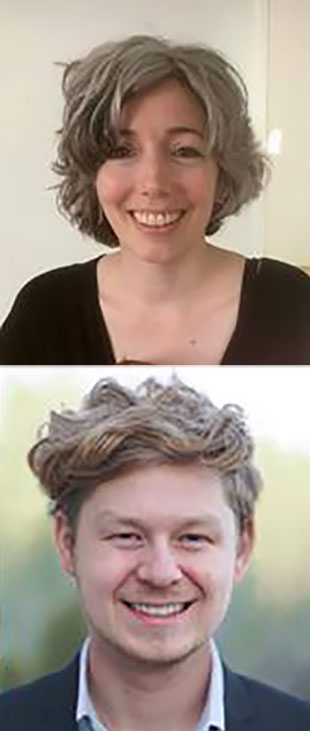
Franziska Bruckner, Julian Salhofer (AUSTRIA)
WHAT DOES ‘ANIMATION’ MEAN NOW?
In film theory, the term ‘frame’ has been instrumental in describing single images on film strips. At the same time, ‘framing’ defines the edges of a film frame to select and compose an image (Bordwell/Thompson 2004). This extends to the ‘frame-by-frame’ definition for analog animation techniques (e.g., Furniss 1998), to ‘keyframes’ for explaining the workflow of cel animation, and later, digital animation techniques. Finally, the ‘between’ of ‘each frame’ that is ‘more important than what exists on each frame’ (McLaren c.f. in Sifianos 1995) has been a source of fruitful discussion within animation studies. But how should those definitions be extended to work for virtual environments? Through experimental combination with virtual reality, the art-based research project VRinMotion investigates how elements of analog stop-motion animation and motion-capture data sets can be transformed into extended animation concepts. Therefore, the project team consisting of artists, technicians, and theorists has developed hybrid artistic tools and workflows to creatively find, advance, and establish novel prospects of those techniques in virtual settings. The talk will focus on the outcomes of the first two parts of VRinMotion, namely ‘ExperiMotion 1 – 2D object and replacement animation’, which was developed together with artists Max Hattler and Sune Petersen, and ‘ExperiMotion 2 – experimental puppeteering’, which was established with artists Friedrich Kirschner and Loeoni Voegelin. Both experimental setups also explore and contextualize questions about ‘frames’, ‘framing’, ‘frame rates’, and the ‘in-between of frames’ in combination with spatiality, perception, and innovative virtual time-space relationships such as: How can spatiality in a virtual environment be generated with a ‘frame-by-frame’ animation technique that is flat in and by itself? What are the possible roles of (generated) stop-motion loops in an animated virtual live performance? What can an experimental manipulation or puppeteering of a virtual space-time look like?
Franziska Bruckner is a senior researcher at the Research Group Media Creation at the St. Poelten University of Applied Sciences. Her education includes master’s degrees at the University for Applied Arts Vienna and the University of Vienna, where she worked as a University Assistant from 2009 to 2013 and earned her doctorate in 2017. Her research focuses on animation history and analysis, animation in AR/VR environments, and climate change communication. Currently, she is the head of the projects VRinMotion (FWF), AniVision (FWF), and Climate Media Frames (GFF NÖ).
Julian Salhofer is a junior researcher at the St. Pölten University of Applied Sciences in the Media Creation Research Group at the Institute of Creative\ Media/Technologies (ICMT). He received a bachelor’s degree in Media technology and Design and a master’s degree in Digital Arts at the University of Applied Sciences Upper Austria. His current fields of study are animation and virtual reality. He is interested in animation, 3D design, interactive media, and sound design.
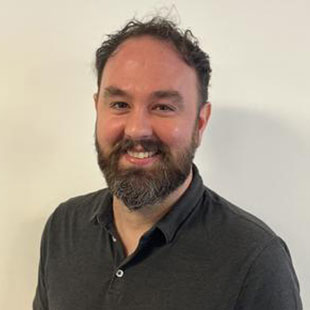
Christopher Holliday (United Kingdom)
AI VIDEO DUBBING AND TRUESYNC
This paper examines the stakes of AI originality and discourses of authenticity in relation to the artificial intelligence engine TrueSync, which uses machine learning and persuasive computer animation processing to create sophisticated lip-synced visual translations. Developed by the Neural Network Lab Flawless and approximating the effects of deepfakes technology (Contreras 2022), the TrueSync software has primarily been used when adapting films for foreign release, whereby the original mouth movements of screen performers are digitally retouched to match new national language dubs. Such video dubbing (‘vubbing’) processes swerve the clumsy synchrony of prior dubbing practices, while their visual accuracy for linguistic translations has since been applied to remove verbal expletives from footage without the need for expensive reshoots (Spangler 2022). This paper suggests that the facemapping AI techniques involved in the TrueSync tool recall prior histories of the multiple-language version (MLV) initially developed within early sound cinema. As a counterpoint to intertitles that otherwise afforded readily flexible language transfer across nations, MLV production involved the shooting of feature films in several languages concurrently, typically reusing sets and costumes, sharing technical equipment between production units, and in some instances casting the same stars across transnational features (Vincendeau 1988). Reflecting on the new creative possibilities of the TruSync video dubbing software and how generative AI is being used to ‘reshoot’ filmed dialogue to fit new vocalizations in post-production, this paper identifies how AI ‘vubbing’ technologies are offering filmmakers new opportunities for multilingual film production that emphasize national specificity and accessibility via the animated construction of newly digitized characters.
Christopher Holliday is Lecturer in Liberal Arts and Visual Cultures Education at King’s College London, specializing in Hollywood cinema, animation history, and contemporary digital media. He is the author of The Computer-Animated Film: Industry, Style and Genre (EUP, 2018), and co-editor of the anthologies Fantasy/Animation: Connections Between Media, Mediums and Genres (Routledge, 2018) and Snow White and the Seven Dwarfs: New Perspectives on Production, Reception, Legacy (Bloomsbury, 2021). Christopher is currently researching the relationship between identity politics and digital technologies in popular cinema, and can be found as the curator of the website/blog/podcast www.fantasy-animation.org.
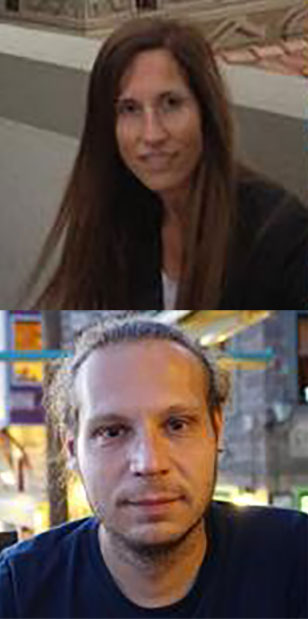
Nicoletta Adamo, Christos Mousas (USA)
CONVERTING VIDEO LECTURES INTO EFFECTIVE AND INCLUSIVE ANIMATED PRESENTATIONS
Our project aims to develop, validate, study, and make publicly available an AI-based framework that takes existing online instructional video lectures on STEM topicscreated by human instructors and transform them into instructionally effective animated agent-based presentations.In particular, the transformed presentations are delivered by animated pedagogical agents who display emotionally and socially sensitive voice and gesture, react to the emotional state of the learner, and represent diversity in gender, ethnicity, and age. More specifically, our framework converts the gestures extracted from instructional video lectures into animation data that can be mapped to a rigged 3D character that can be rendered with various genders, ethnicities, and ages. Further, the framework allows for synthesizing affect-expressive body gestures based on a novel hybrid method that combines rule-based, speech prosody analysis and video analysis approaches. While rule-based approaches have been used extensively to generate affective body gestures, speech-driven gesture animation has been studied in the recent literature mostly without specific emphasis on affect-expressive models. Videos have been used to extract the gesturing style of the speaker and generate gesture animations consistent with the performer’s style. The proposed framework builds on our recent work on rule-based affective gesture generation and also exploits the affective content of the speech and the expressive content of the video to enhance the expressiveness of the animated agent’s synthesized gestures. This allows for creating a particular agent type with a unique personality and movement style, thus avoiding the pitfall of nonspecific behavior. (The project is funded by NSF- RETLL – Collaborative Research: Using Artificial Intelligence to Transform Online Video Lectures into Effective and Inclusive Agent-Based Presentations – Award #2201019.)
Nicoletta Adamo is Professor of Computer Graphics Technology and Purdue University Faculty Scholar. She is an award-winning animator and graphic
designer and creator of several 2D and 3D animations that aired on national television. Her area of expertise is in character animation and character design and her research interests focus on the application of 3D animation technology to education, HCI (Human Computer Interaction), affective computing and visualization. Prof. Adamo is the co-founder and director of the IDEAlaboratory [https:// polytechnic.purdue.edu/facilities/idea-laboratory].
Christos Mousas is an Assistant Professor in the Department of Computer Graphics Technology and director of the Virtual Reality Lab at Purdue University, Polytechnic Institute. His research revolves around virtual reality, virtual humans, computer graphics, and human-computer interaction. From 2015-2016 he was a Postdoctoral Researcher in the Visual Computing Lab of the Department of Computer Science at Dartmouth College. He holds a Ph.D. (2014) in Informatics and an M.Sc. (2011) in Multimedia Applications and Virtual Environments, both from the Department of Informatics of the University of Sussex and a five-year integrated Masters (B.Sc. & M.Sc.; 2009) in Audiovisual Science and Art from the Department of Audio & Visual Arts of Ionian University. He is a member of ACM and IEEE.
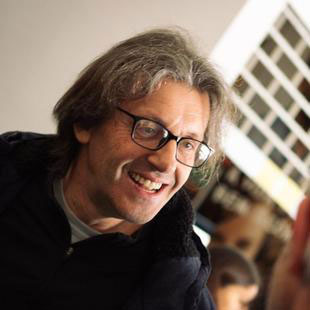
António Manuel Dias Costa Valente (Portugal)
AI ON THE WAY TO ANIMATED FILM STORYBOARDING
The preparation of a film is a complex creative and authorial process, where advances and setbacks are almost always multiplied. There are movements in creative moments that take various forms through the development of the writing, the construction of multiple images, the visualization of the movement and the search for sound contexts. Done by only a few creatives, often from a single author, the time of preparation of a new animation film is almost always marked by isolation and a lot ofexperimentation. In general, there seems to be a consensus that the most significant phase of the preparation time seems to end with completion of the storyboard. AI seems to be the new creative time companion of some contemporary animation authors. AI text generators drive the writing of the synopsis, the treatment and finally the plot. Other AI generators multiply graphic and imaging possibilities in the field of graphic search for characters, objects and scenarios. AI animation generators are being used to test the possibilities of animated movement and finally, sound and music generators are already proposing the sound space of the future film at this stage of preparation. New AI tools seem to simplify the work of previewing a film before its production, as tested and disseminated, for example, by Coppola at his Zoetrope Studios, but now also at the authorial level, participating in the creative realization of the storyboard and even of an animatic. The laboratory work that has been developed in this field by three authors in Portugal, Australia and China will be the topic of analysis in this lecture.
António Manuel Dias Costa Valente, is Assistant Professor at the University of Algarve, a researcher at CIAC and a collaborator at ID+, integrating the coordination of DMAD – PhD in Digital Media Art. Researching in the field of animation cinema, he co-authored the first feature film in Portuguese animation and has produced dozens of award-winning films. He directs the International Journal of Cinema and AVANCA | CINEMA,International Conference Cinema – Art, Technology, Communication since 2010. Having been President of the Portuguese Federation of Film Societies, he is currently Secretary for Europe of the International Federation of Film Societies.
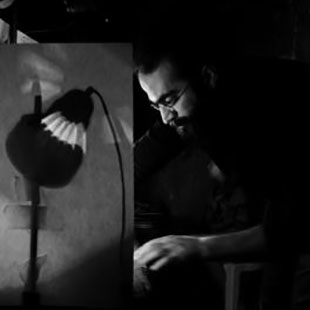
Charalambos Margaritis (Cyprus)
MODULAR, DYNAMIC, MULTICURSAL AND NONLINEAR NARRATIVE STRUCTURES APPLIED IN ANIMATED STORYTELLING
This presentation concerns ongoing practice-based research on the ways in which the model of the open-world modular narrative structure may be applied in animated film, thus proposing films whose structure changes dynamically (while they are presented) without resorting to interaction (without the viewer initiating this change) and resulting in a multicursal iteration among the narrative parts of the film. This aims at proposing an essentially different mode of presentation of animated films which allows for varied, nuanced, open-ended narrations and which constantly manipulates, alters and deconstructs the emergence of narrative meaning. Instead of focusing on the latest digital tools available, we focus on the essential functional differences between the digital file (as a piece of executable code) and the film (as a physical material and medium), and search ways in which the former may propose something structurally different than a mere simulation of the works made possible by the latter. This presentation covers the theoretical background of the research, grounded in narratological concepts, literary theory, film theory, screenplay theory and video game narrative theory. By reading the Aristotelian principles of order and magnitude under the light of the concepts of narrative transportation and suspension of disbelief and making use of the logic of open-world games, the research proposes an approach to film narrative which differs from what Noel Burch calls the institutional mode of representation, and moves towards a filmic experience of a disarticulated yet narratively coherent content. The presentation proposes and explains a set of already implemented and tested techniques that allow animated film narratives to be presented in a fragmentary, aleatory, multicursal and nonlinear way. The techniques are made possible through a series of simple software created to this goal and which put to use the raw filmic narrative material on all its levels (scenes, shots and individual frames) in ways that manipulate, alter or deconstruct the emergence of narrative meaning. This resulted in a set of artworks which will be briefly presented and discussed.
Charalambos Margaritis graduated from the National Superior Fine Arts School of Paris (ENSBA) in 2012. His work focuses on animated films, print-making, drawing, painting and comics. In 2010 he studied the traditional icon painting techniques with the monk Paisios Agrapides in the Cell of Saint Archangels in Karyes of Mount Athos, where he resided for three months. Since 2014 he has been collaborating with the classical music ensemble Trio Dell’Arte producing animated films that accompany live musical performances of classical chamber music. He currently lives and works in Paphos, Cyprus, where, in 2015, he co-founded the Kimonos Art Center. He teaches animation techniques, drawing and printmaking. Since 2017, he has been directing the annual international animation festival The Animattikon Project, founded in the framework of the European Capital of Culture, PAFOS2017 and produced ever since by the Kimonos Art Center in Paphos. His films have been selected and awarded at several animated film festivals around the world. Since 2018 he has been the ambassador of the European Animation Awards in Cyprus. He is currently conducting his PhD research on experimental narrative techniques in animated film.
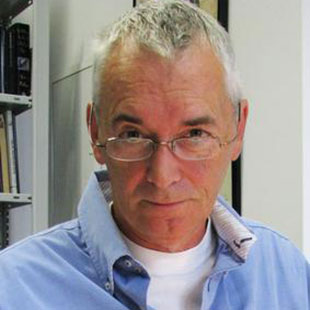
Ingo Petzke (Germany)
HANS RICHTER VS VIKING EGGELING: DEFINITELY NO BEST FRIENDS FOREVER
Animation often comes in close interdependency with the visual arts. Particularly so in the 1920s when artists of the constructivist vein ranked highly among the forefathers of animation film. Among them, Swede Viking Eggeling and Swiss Hans Richter are of particular prominence with Symphonie Diagonale and Rhythmus 21 respectively. In the anglosphere, they are portrayed as BBF (Best Friends Forever) with Richter the Master and Eggeling the Minion – exactly the way Richter always spread his gospel. A closer look, however, based on letters, diaries, and diverse documents (including the ones from a Swiss criminal investigation) paints a completely different picture. Richter’s vaingloriousness led him to exploit Eggeling on many levels. He embezzled Eggeling’s estate, ‘stole’ from his wife Erna Niemeyer [Re Soupault] objects she had opted for in separate estate, censored and eventually blocked a doctoral thesis by Louise O’Konor that was 12 years in the making and finally even forged paintings by Eggeling which he then tried to sell to the Moderna Museet in Stockholm. And in all likelihood, he even forged the film Symphonie Diagonale. A sad chain of stories, all too eagerly swept under the carpet.
Ingo Petzke was born in 1947. Professor Emeritus (Film) at Technical University Würzburg, Germany; Associate Professor, Bond University, Australia; Adjunct Professor, James-Cook University Townsville, Australia; Guest Professor, Film Institute of the University of the Philippines, Diliman, Metro Manila, Philippines.
Affiliations: (German) Film Critics Association; Australian Screen Production, Education & Research Association; Society for Media in Science (Germany) Filmmaker, film curator, festival founder, author of 15 books and numerous articles. Lectures, seminars, workshops in 36 countries around the globe. Supervision in excess of 2,000 student films/videos, including approximately 70 films as Diploma/Bachelor/Masters final works. Research focus: history of experimental/avant-garde film; Australian cinema.
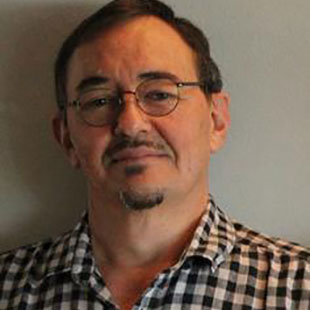
Georg Diederik (Diek) Grobler (South Africa)
ANIMATION MAKING LANGUAGE VISIBLE: CREATING ANIMATED POETRY
FilmLiterary scholars (Riffaterre, Wolofsky and Bradford, amongst others) accentuate the intentionality of language in poetry; how every word is considered and placed in a specific position within a text in relation to other words. Animation, created frame by frame, has the same intentionality. Filmmaker Ruth Lingford expands on this relationship between poetry and animation: ‘They have this way of colliding familiar elements in order to get new thoughts, new ideas.’ (Mitchell 2011). In this paper I will explore how animation adds value to poetry as an artform within a specific language (Afrikaans) and cultural context (post-apartheid South Africa). The Filmverse project is an animated poetry project which I curated in South Africa in 2014 and 2016. During the course of the three-year project, 24 short animated films were created. Although the concept of a poetry-focussed animation project is not unique, the almost complete absence of a culture of animation production in South Africa, and the complicated history of the language itself, sets Filmverse apart. Using examples from the project I will explain the nature of the project and my interaction with the participating artists, most of which had no prior animation experience. The interconnectivity of media was explored through transmediation, a concept introduced by Charles Suhor (1984) to refer to translation between sign systems as a technique to reveal relationships between medium and content. Suhor used translation from one sign system into another as a pedagogical tool to help students recognise connections between signs systems. In the project the concept of transmediation was utilised as a formalisation of the creative process. Animation can be used to empower poetry by increasing its visibility and exposure within a language and culture. Animation can also help poetry in a small language reach the world stage.
Georg Diederik (Diek) Grobler (1964) is a visual artist aworking in various media and disciplines. Since 2010 his creative and theoretical focus has been on animated poetry-film. In 2014 and 2016 he devised and directed the Filmverse project, overseeing the production of 24 Afrikaans animated poetry-films. Grobler’s own films have been widely exhibited at international animation festivals, and his work has been shortlisted twice for the Weimar Poetry-film Award. He was awarded a PhD in Art by the University of South Africa on the thesis topic Narrative strategies in animated poetry-film (2021). Diek Grobler is an independent researcher of poetry-film and experimental forms of animation.
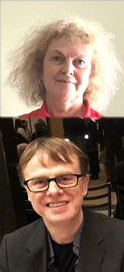
Laurence Arcadias, Robin Corbet (USA)
WORKSHOPPING ART/SCIENCE ACTIVITIES FOR A TRAVELLING ASTRO-ANIMATION STEAM EXHIBITION
For several years our students at the Maryland Institute College of Art have worked with NASA astronomers, to produce animations inspired by cutting-edge research. The results can be whimsical or poetic, but constrained by scientific rigor. The animations have been used for scientific outreach and educational purposes and can be seen on astroanimation.org. A few years ago, we received a National Endowment for the Arts grant to conduct research to evaluate our program and received positive responses. Building on our success, we are now developing a traveling pop-up astro-animation exhibition to be used for informal STEAM learning in unusual locations such as train stations or marketplaces. We aim to attract teenagers from underrepresented communities who may not have been exposed to astronomy or consider STEAM as a potential option for study. ‘Science anxiety’ has been reported to be a significant barrier to learning. By mixing animation with astronomy, our project has the capability to reach out and stimulate interest in STEAM, making animation and science engaging in an unconventional way. An important component of the exhibition will be hands-on activities where participants will be invited to create their own artistic responses to the science with the help of a facilitator. To perform an initial test of these and evaluate their effectiveness, we carried out a workshop at the Baltimore School for the Arts, a top performing arts high school, in coordination with animation teachers and their students. We spent a few days brainstorming the animation/science activities for students aged fourteen to seventeen. During two classes, we gave short scientific presentations on black holes, asteroids and comets, and supernovae that led to three types of art activities: a giant coloring wall with projected celestial phenomena, a stop-motion station, and an augmented animation film of a comet. For the comet animation, students colored in images of the printed film and turned it into an animation. This work is supported by the Maryland Space Business Roundtable, the MICA Animation Department, and NASA under award number 80GSFC21M0002.
Laurence Arcadias as an animation professor at the Maryland Institute College of Art (MICA) in Baltimore, served as the department chair for over 12 years. Her animation films have toured in numerous festivals around the world and received several awards. Her previous work includes being an animation film director for French television programs. She taught at numerous colleges and used her animation skills at several technology companies around Silicon Valley. She co-initiated an astro-animation class in collaboration with NASA scientists. She has pursued her own artistic work and secured funding from outside sources to undertake her personal research in the intersections between science and art. She wants to explore how this program can be expanded in new directions and investigate how to bring animation and astronomy to underrepresented groups.
Robin Corbet obtained a PhD in high-energy astrophysics from University College London at their Mullard Space Science Laboratory. He subsequently continued his astronomical research at Oxford University, the Japanese Institute of Space and Astronautical Science, and Pennsylvania State University. He is now a Senior Research Scientist at the University of Maryland, Baltimore County, based at the NASA Goddard Space Flight Center where he works with the Fermi Gamma-ray Space Telescope, and an adjunct professor at the Maryland Institute College of Art. His research centers on binary star systems containing black holes or neutron stars, where the incredibly strong gravitational and magnetic fields result in the production of X-rays and gamma rays. At MICA, Robin Corbet co-teaches the astro-animation class, and he seeks ways to build bridges between science and art.
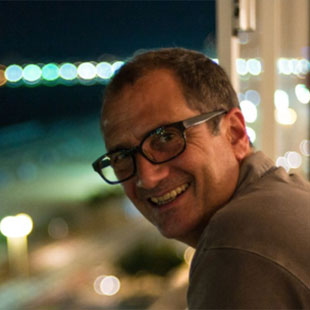
João Paulo Schlittler (Brazil)
TYPE E-MOTION – POETICS OF ANIMATED TYPOGRAPHY IN MOTION
Contemporary and Modernist artists have experimented with animation in a variety of forms: from kinetic sculpture to abstract animated experiments, animation has added visual and temporal aspects to their work. Motion design and scientific films are increasingly using animation to support explanations and facilitate communication. However, animated graphics are not exclusively functional. Considering both cases, this research intends to survey animated typography as a means of expressing emotions in a range of art forms, such as poetry, cinema, music, visual and digital arts. Kinetic typography has its foundations in motion-based experiments of the Bauhaus, De Stijl, Dadaist and Futurist avant-garde movements. Marcel Duchamp’s Anemic Cinema is a landmark of kinetic poetry. Abstract animation by Richter, Ruttmann, Moholy-Nagy and typographic experimentation by McLaren and Len Lye are historically important in defining a field established by motion design pioneers Saul and Elaine Bass, Maurice Binder and Pablo Ferro. Among other examples, this study will survey: electronically animated Brazilian concrete poetry by Ferreira Gullar, Augusto and Haroldo de Campos, visual poetry GIFs by musician Arnaldo Antunes, David Byrne’s PowerPoint art, Flash-generated interactive poetry by Brian Kim Stefans and Jörg Piringer’s myriad of computational poetics. In our networked culture, animated typography can construct space: The Matrix’s binary green digital rain is emblematic of cybernetic realities, text builds an entire city in Alex Gopher’s music video The Child and typographical animation can also occupy and re-signify physical spaces as Graffiti Research Lab demonstrate in urban interventions. Motion graphic designer Nando Costa ponders that as we adopt artificial intelligence in our creative process ‘the reshaping of art and design has already begun’. Consequently, we may argue that text-to-video animation conversion algorithms will reshape typographical communication and therefore writing as we know it today.
João Paulo Schlittler is a researcher and designer working in film, television and digital media. He holds a PhD in Design from Universidade de São Paulo (USP), a Masters Degree in Interactive Telecommunications from New York University and a B.A. in Architecture from USP. He is an Associate Professor at the Film, Radio and Television undergraduate program at USP’s School of Communication and Arts as well as in the graduate Design program at USP’s Faculty of Architecture and Urbanism. He is the coordinator of ZOOTROPO, an animation studies research group. João Paulo headed the design department at TV Cultura in Brazil, was Director of Broadcast and Interactive Design at Discovery Networks and Director of Graphics and Visual Effects at HBO.
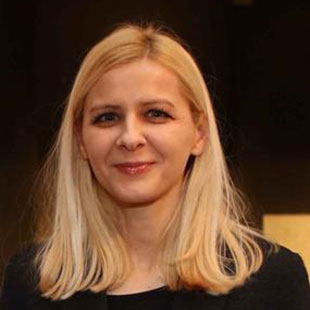
Svjetlana Sumpor (Croatia)
ANIMATED DYSTOPIAN WORLDS
The aim of the paper is to explore a wide range of modes of creating a dystopian world in an animated film by comparing four distinct, critically-acclaimed examples: Ghost in the Shell (1995, Mamoru Oshii), WALL-E (2008, Andrew Stanton), Dream Journal 2016-2019 (2019, Jon Rafman) and Accidental Luxuriance of the Translucent Watery Rebus (2020, Dalibor Barić). These four animated works were created in different contexts and production conditions (either by large animation studios or by independent artists) and they were intended for different distribution channels and audiences (for screening in cinemas, at film festivals or as parts of art exhibitions). They draw their inspiration from different cultural imagery, experiences and backgrounds (heritage of manga/comics; avant-garde art techniques; appropriation of images from the Internet (sub)culture), and they rely on different narrative strategies (character development; space-temporal representation; classical or fragmentary storytelling). In addition to the differences listed, the dystopian worlds they depict also display a wide range of genre modes, i.e. they have an alternatively cyberpunk, humorous, poetic or horrific tone. What all four examples have in common is that they criticize contemporary society by extrapolating some of its negative, disconcerting or frightening traits, which they then use as starting points for the building of an imaginary, alternative, extremely negative version of the world. In creating their visions, they employ a number of typical science fiction motifs. The great differences among them demonstrate that the possibilities offered by the application of different narrative strategies and attitudes, as well as those offered by the incorporation or appropriation of techniques and procedures of various art disciplines, ensure the vitality and originality of the genre of dystopia in its animated form.
Svjetlana Sumpor is an interdisciplinary scholar, curator and critic. She has a degree in art history and comparative literature and a PhD in literature, performative studies, film and culture. She is the author of several books, the latest of which is Ironijske strategije distopije (Ironical Strategies of Dystopia, Zagreb, Leykam international, 2021) that discusses typical strategies of the genre of dystopia in literature and film. She works as a curator, while pursuing her interests in dystopian studies as an independent scholar.
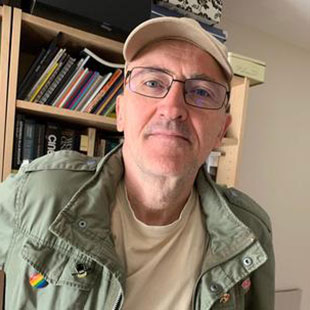
Midhat Ajanović (Sweden)
DUŠAN VUKOTIĆ AND SCI-FI
This paper will provide an overview of the film production of the Croatian animation genius Dušan Vukotić in which he showed a strong interest in the science-fiction genre. I will put a certain focus on his last film, which, it seems to me, has not attracted enough attention from animation scholars. The first Vukotić’s film I discuss is Playful Robot (Nestašni robot, 1956). In Playful Robot, Vukotić announced his step towards originality both in terms of expression and thematic plan, creating the character of a good robot which is one of the first such cases in popular culture in general, thus anticipating the later great success of Osamu Tezuka with the series Astro Boy (Tetsuwan Atomu, Japan, 1963), whose opening episode is undoubtedly reminiscent of Vukotić’s work due to its morphological and animation characteristics. It is interesting that many flirting with science fiction, his favorite genre to which he kept returning (Cow on the Moon, in a way also Abra Kadabra, until his last film, Welcome to Planet Earth) actually marked Vukotic’s career. The same applies to his work outside of animation, where, for example, in Guests from the Galaxy (Gosti iz galaksije, 1981), in which Jan Švankmajer was a collaborator, Vukotić tried to join the trend launched by Lucas and Spielberg with their fairy-tale sci-fi films. Even his last film Welcome to Planet Earth (Dobrodošli na planet Zemlja) should be viewed in this context. Namely, as always, Vukotić unmistakably captured the spirit of the times and the central aesthetic features and techniques of current animation production, he applied some of them, and anticipated others to a good extent. Today, it is quite clear that a tectonic change in the development of human civilization took place at the turn of the eighties and nineties. The relationship of political power, geography, economic and technological circumstances were radically changed, which logically all together affected the sphere of art, culture, and spirituality in general. In the area of media and communication, there has been a paradigm shift, which today is called the ‘Visual Turn’ due to the increasingly dominant image compared to other means of communication. However, the very meaning of the animated picture, contained in the creation of what is impossible by other means, has not changed. At the transition between the cinematographic and digital areas, hybridization becomes one of the two basic features of animation. The second, of course, is research into new artistic possibilities and techniques for three-dimensional image presentation. Vukotić perfectly recognized the spirit of the times and correctly assessed the direction in which the art of animation was moving. Changes in technology, distribution, a different audience and cultural context conditioned a new approach in the articulation of ideas with adequate technical solutions.
Midhat Ajanović Ayan is a writer and filmologist born in Sarajevo (Bosnia) in 1959. He studied journalism in Sarajevo and practiced animation in Zagreb Film’s Animation Studio (Croatia). Since 1994 he has been living in Gothenburg (Sweden) where he obtained a degree of Doctor of Philosophy in Film Studies as well as a post-doctoral degree. He teaches at various Swedish universities (currently at University West in Trollhättan and writes regularly about film and animation. He has published many books in various genres and in several languages, including nine novels and nine books that deal with cinema, comics and animation.
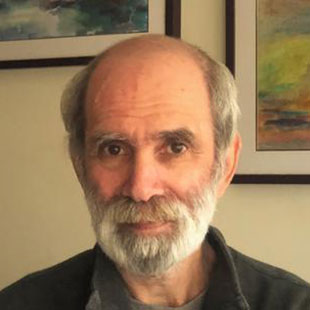
Mikhail Gurevich (USA)
WARNING SHOTS: REVERBERATING SCI-FI TROPES IN THE FILMS OF THE 1970-80s
In this day and age one can hardly escape the burning agenda of the present; and the weight of dramatic history-in-the-making, in my mind, informs even a retrospective conceptualization of certain facts and traits in animation history. One of the hypostases of the sci-fi genre at large, bordering science fantasy and other hybrid forms, is, obviously, a social parabola of different varieties; utopian/dystopian modeling; a ‘future-fromthe-past’ matrix. This kind of ‘semantic train’ relates also to the use of particular sci-fi elements and devices that penetrates a diverse body of artistic creations. In this light, I’m looking at some not quite conventional films of the 1970s-80s, from Western canon proper and national schools/traditions of the Soviet realm – where the sci-fi premise or general assumption would develop into metaphors of deeper reach and even prophetic vision. This ranges from ‘mysterious gas’ and its weirdly terrible effects in Raoul Servais’ classic Operation X-70 (1971); to ‘smart tank’ as a revenge-justice vehicle in Polygon (Russia/USSR, 1977); to space blaster, transforming the executioner into the victim on another planet in The Lesson (Armenia/USSR, 1987); then there are tech-fantasy-aided war games going rogue, in The Last Combat (Ukraine/USSR, 1989); up to the nuclear catastrophe, in Stephen King and Ray Bradbury adaptations, The Battle (Ukraine/USSR, 1986) and There Will Come Soft Rains (Uzbekistan/USSR, 1984); and to full-blown apocalyptic picture of how this mad-mad-mad world ends in Wind (Armenia/ USSR, 1988). Many moves, twists, and imagery here, as though unintentionally futurologic, look strikingly relevant today, sometimes rhyming immediately with daily agenda. At the same time, they strongly hint at certain tensions and anxieties behind the specific artistic choices; and arguably, also at ideological chasms, hidden or dormant until the time is ripe, to surface in force later – thus throwing perhaps new light on what is underlying the current issues.
Mikhail Gurevich (Chicago) is an independent scholar and critic, born in Moscow, Russia. Writes about literature, theater and film, focusing on animation, puppetry and experimental theatre and cinema. Since the late 1970s, has been contributing to major cultural publications in Russia; later edited independent periodicals. Served as expert-consultant for professional associations and institutions in theatre and cinema; as board member and adviser at film/animation studios. From 1992 lives in USA. Wrote on animation in particular for professional and academic publications. Was a guest lecturer at a number of universities internationally. Participated at many festivals in various capacities; program director at Blow-up International Film Festival. Also involved in broader cultural studies and journalism, and in documentary film-making.
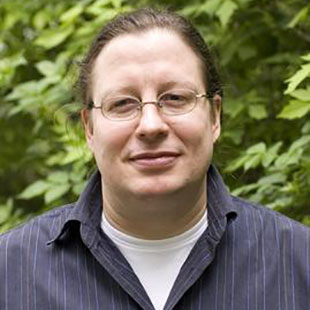
Jens Meinrenken (Germany)
DANCING ON THE MOON. THE BEAUTIFUL AND SOMETIMES WEIRD AND STRANGE HISTORY OF SCIENCE FICTION IN ANIMATION
In the face of the vast and ground breaking examples of science fiction in global animation it is quit astonishing that nearly no comprehensive study about that topic exists in the academic world. Or to quote from a 2017 article by Istvan Csicsery-Ronay Jr., the co-editor of Science Fiction Studies,: ‘Histories of science fiction animation have yet to be written.’ Popular TV-Series like The Jetsons, Futurama or Rick & Morty and cult movies like Fantastic Planet or Ghost in the Shell shaped not only the taste of the audience and inspired generations of younger and adult viewers but also set high standards for the aesthetic, originality and storytelling of the genre. If we understand animation as an art form where everything is possible, we still have to ask what specific role does play science fiction in the history of animation? The presentation wants to give a brief historic overview of the fascinating world of science fiction in animation by answering the following three main questions: 1. What are the general topics of science fiction in animation? 2. How did the development of new technology influence the style of science fiction animation? 3. In which way is the beauty and often weird and strange fantasy of science fiction animation influenced by the imagination of other art forms or even assisting them?
Jens Meinrenken is an art historian, lecturer and curator. He studied art history, philosophy and German language as well as literature in Bamberg and Berlin. He is the co-founder of Deutscher Comicverein and has published numerous articles on a wide range of subjects including animated movies, computer games, and comics. His work as a curator includes for example Heroes, Freaks, and Super-Rabbis. Jewish Dimension of Comic Art, Jewish Museum Berlin (2010) and Comics from Berlin. Pictures of a City, Haus der Berliner Festspiele (2013). He also curated a film programme about the intersection of comics and animation for Animafest Zagreb 2017.
Organisers:
World Festival of Animated film – Animafest Zagreb
ASIFA Austria
Hulahop Film & Art Production
Organising committee:
Daniel Šuljić, MA, World Festival of Animated Film – Animafest Zagreb
Franziska Bruckner, PhD St. Pölten University of Applied Sciences / AG Animation Vienna
Nikica Gilić, PhD, Prof., Faculty of Humanities and Social Sciences, University of Zagreb
Prof. Holger Lang, Webster University
Prof. Hrvoje Turković, PhD, Prof. in retirement, Academy of Dramatic Arts, University of Zagreb
Andrijana Ružić, Independent Scholar, Università Statale di Milano
With support of:
Croatian Audiovisual Centre
Zagreb Tourist Board
City of Zagreb
The Croatian Film Directors’ Guild
AG Animation / Society for Media Studies
St. Pölten University of Applied Sciences


